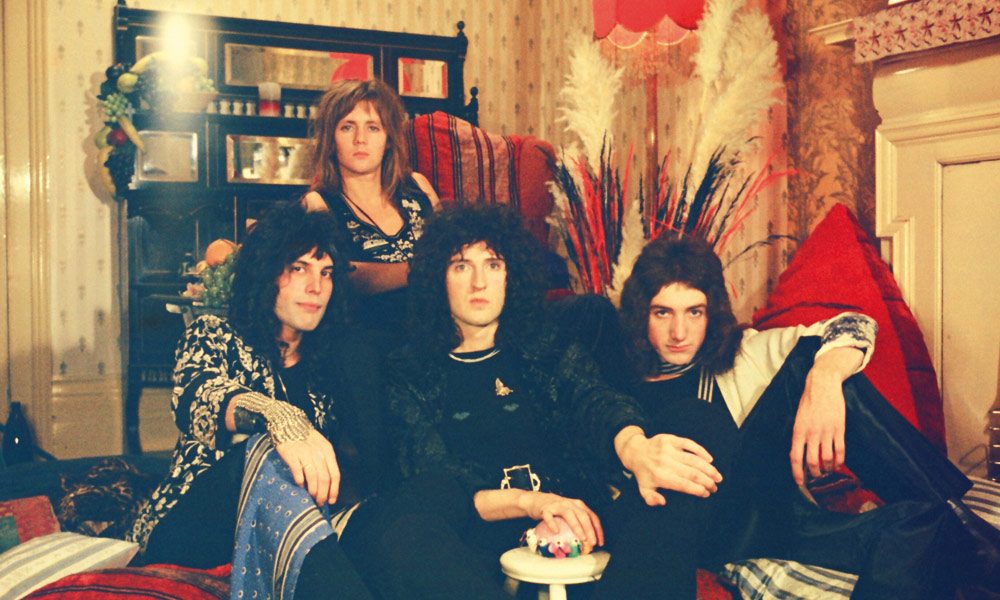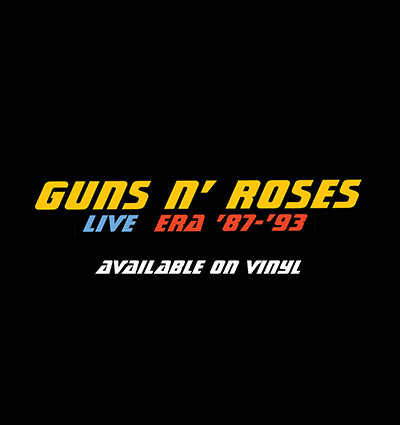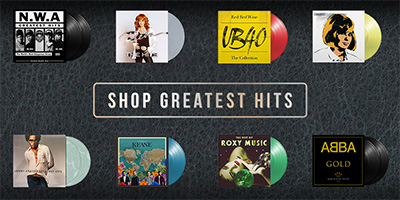Queen – A History Lesson

On Sunday 31 March 1974 Queen appeared at the legendary London venue The Rainbow. Few who turned up for that iconic performance could have predicted they would go on to become one of the world’s best and most successful rock groups, although some in the audience may have suspected it after this stunning show.
Colin Irwin was there, reporting for Britain’s Melody Maker and his review appeared in the following week’s paper. What’s so fascinating about his take on the concert is that it was written ‘in the now’, not with the 20/20 vision of hindsight. As Colin says at the close of his review, “With a lead singer called Freddie Mercury, how could they fail to be rock stars?”
This is history…
Queen Identikit Rock!
Freddie Mercury glares thunderously from beneath the beam of the spotlight. Anger and hostility ooze from his mouth. He pumps his right fist vigorously skywards and screams “Liar, liar.”
A hundred fists go up with him while the words come hollering back from the audience like an echo. Mercury allows a flicker of a smirk to break across his face. It’s only momentary but it’s the symbol of a man enjoying his most triumphant hour.
Proof of the triumph is a smash hit record in the chart and a full audience last Sunday at London’s Rainbow Theatre clamouring for more.
Queen have made it. Nobody’s more aware of this than Mercury who strides off, head high, arms aloft, looking more than satisfied at completing a good night’s work.
He’s sweated unmercifully, staked his claim to become a mighty star and two fingers to anyone who dares to doubt it.
Queen already seem to have built up a formidable following. After a reasonable opening set by Nutz there was plenty of impatience among fans. There were whistles, shouts, slow hand-claps, chants of “We Want Queen.” The place had atmosphere.
Eventually, the lights went off and a ripple of anticipation spread around the theatre. More handclaps and whistles. Then quite suddenly the stage lights went on and they were there.
A roar from the audience and a hopeful dash to the front by some of the younger ones who were quickly dispatched back to their seats. Eyes immediately fix on Freddie Mercury. A tall figure dressed all in white in contrast to his long dark hair. He’s standing in the centre of the stage facing the drum kit with his back to the audience, a green spotlight veering around him.
His arms are stretched out, fanning open his frilly cape giving the effect of an angel. As the band explodes into their first number Mercury swings round and struts aggressively to the edge of the stage. He ain’t no angel.
Mercury dominates the stage throughout the entire concert. Lead guitarist Brian May occasionally steps forward to share the attention but Mercury remains the focal point. He’s the one in white while the rest are in black. “I’m calling you, I’m calling you” he sings, beckoning with his finger to the girls in the first ten rows and shakes his leg as if he’s imitating Presley.
He’ll be still for several seconds, then move swiftly with a definite sense of purpose between Brian May and John Deacon, the bass player, and come back to the front. Halfway through the second song he stops and demands: “What do ya think of the show so far?” but the answer is lost as he erupts again. He’s a riveting performer, the sort of stuff idols are made of, even though his actions sometimes comes across as choreographed poses rather than instinctive natural movements inspired by the music.
Midway through the set the band go into “Great King Rat” from their first album. Here Mercury is at his most commanding singing of a dirty old man. But without warning, he leaves the mike and strikes purposefully off. Brian May radiates some violent lead during his absence but Mercury returns after only a minute or so now dressed entirely in Black. A tee-shirt with a plunging V-neck and some painfully tight trousers made out of what looks like satin. The last quarter of the act gets more and more frenzied.
Their two well-known numbers, “ Keep Yourself Alive” and “Seven Seas of Rhye,” naturally go down a storm and then they launch into a medley based around “ Jailhouse Rock” before finishing up a with “Liar” and Mercury flinging a tambourine into the audience. The noise is reminiscent of the Kop at Liverpool. A lot of the kids have made it to the front now and everybody’s standing. Queen return to do another medley starting off with “Big Spender” (yes, the Peggy Lee/ Shirley Bassey song) and leave only to return once again to do “See What A Fool I’ve Been.”
Mercury comes back this time armed with a bunch of white flowers which he scatters amongst the first few rows. It’s been a full-blooded performance of energy and vitality. There can be few who have not been impressed to some extent by the power of Mercury’s performance and the charisma surrounding him. Yet away from the atmospheric excitement of it all it might be pertinent to examine a bit more closely the strength of the band.
Their appeal is diverse. In the audience there were 14 and 15 years old but there were many around the 20 mark. They make a big show of being hard and heavy and as such they get through to the younger teenager who likes to think he’s progressive and hip. But when you get down to it they’re probably no more inventive than Nazareth or even Geordie. Musically they’re doing nothing special.
There are moments when they sound influenced by The Who and moments when they’re nearer Zeppelin. But their set is interspersed with more boppy things like “Great King Rat” and “Keep Yourself Alive” to make it palatable for those who have been attracted by the single success. And out and out rockers will also find plenty to keep them happy. However limited and unoriginal they may be, they seem certain to make it much bigger yet.
Apart from Mercury the prime figure is Brian May whose talents as a guitarist the band rely on heavily. Like the image of the band as a whole his playing is matted with a frantic energy, a ruthless, aggressive quality. Only one song, “White Queen,” really stands out apart from the hit “Seven Seas of Rhye” and “Keep Yourself Alive,” and it’s “White Queen” which is the only clue that they may have more to offer then merely bash-bash-bash music.
It’s slower and Mercury plays piano, a welcome respite from his exhausting tirades round the stage. Perhaps that is why their performance, though admittedly rousing, was slightly irritating. Their concentration visually on Mercury and musically on May became tiresome once the shock of the first flush was over.
But don’t knock success. Queen inspire the sort of adulation to make boys persuade their mothers to embroider the word Queen on their denim jackets. To make girls scream and leap from their seats to try and reach them. To make people go to their record shop in their thousands and ask for a copy of “Seven Seas of Rhye” or the album “Queen 2.”
It’s a more spectacular success story than most groups having their first chart acknowledgements. As such, they look set to be around a lot longer than many of the people who find sudden fame. With a lead singer called Freddie Mercury, how could they fail to be rock stars?
Click here to pre-order the 2LP version of Live At The Rainbow ’74 from the official uDiscover store.
Colin Irwin















Averil
June 14, 2019 at 3:48 pm
Wow I followed them in the mid 1970s those other titles haven’t heard before When the y came to Australia on. A Television show count down Very interesting would have liked to be in London the to see this show he was certainly a dynamic performer who enjoyed every second of his act and loved the audience